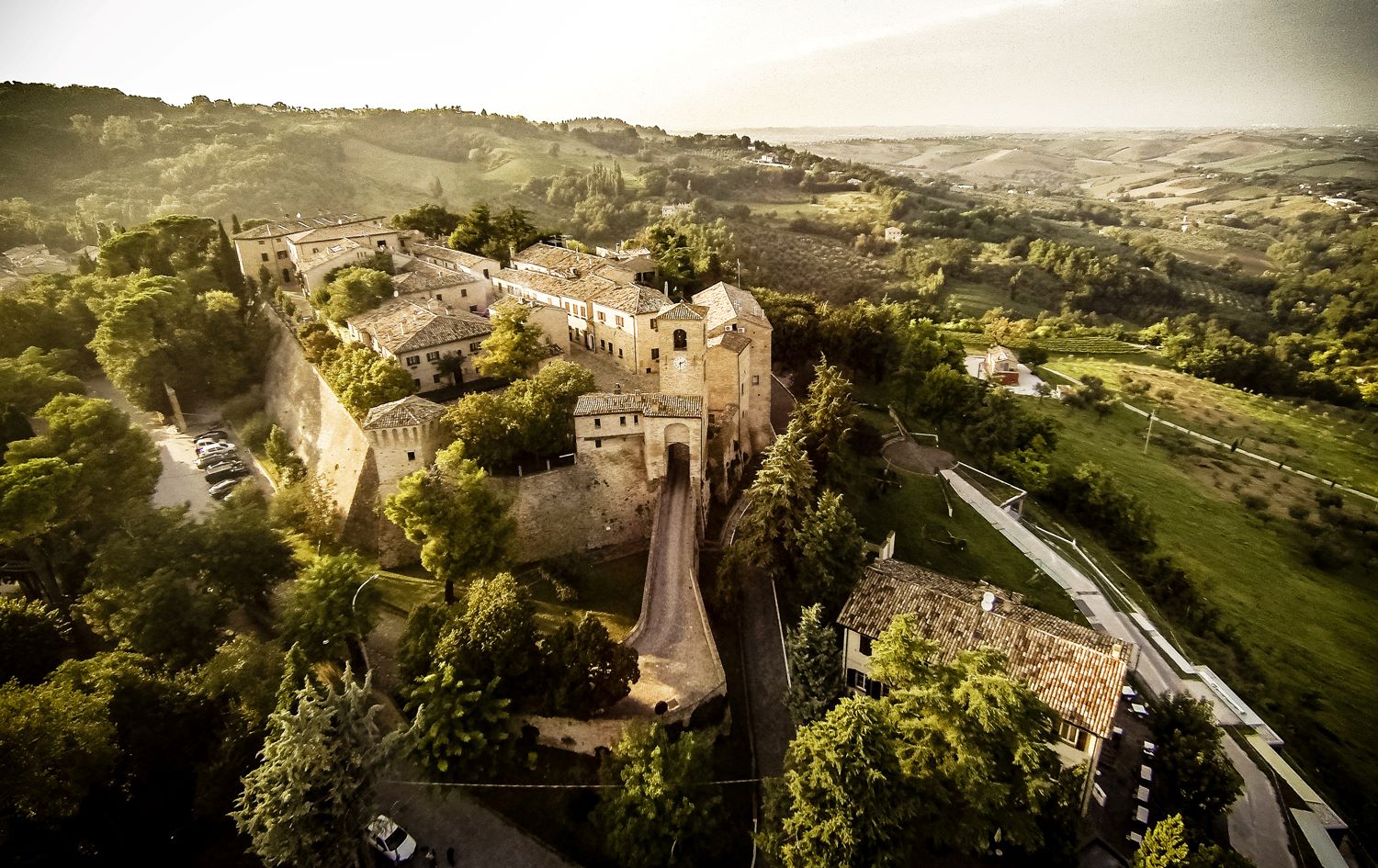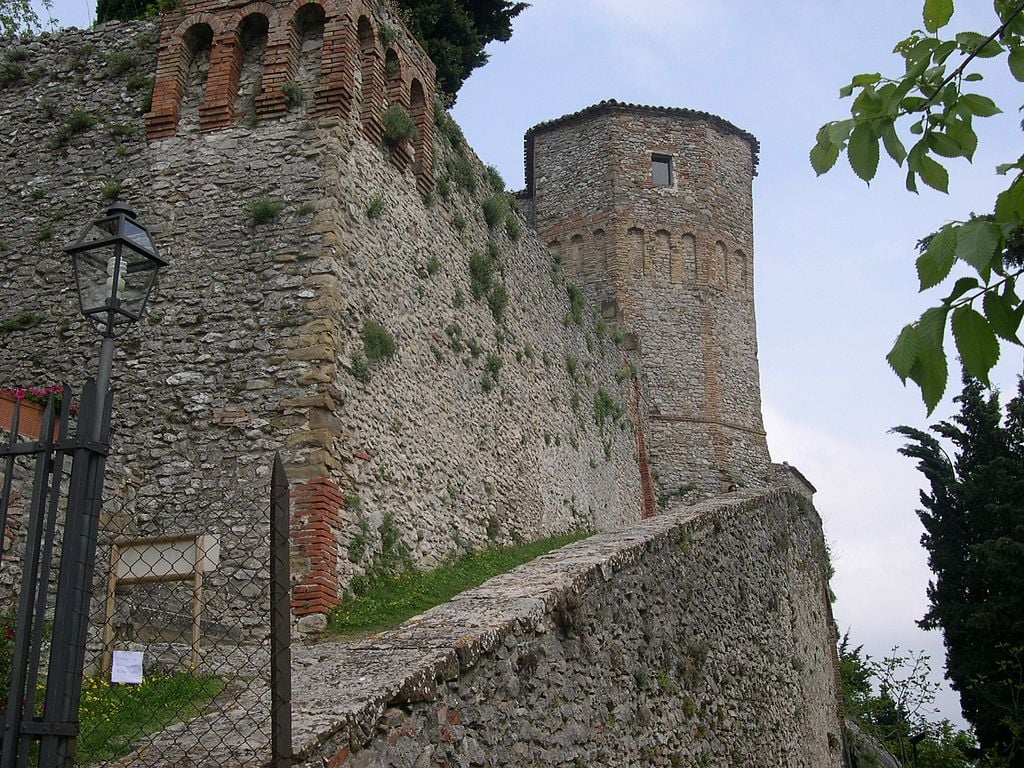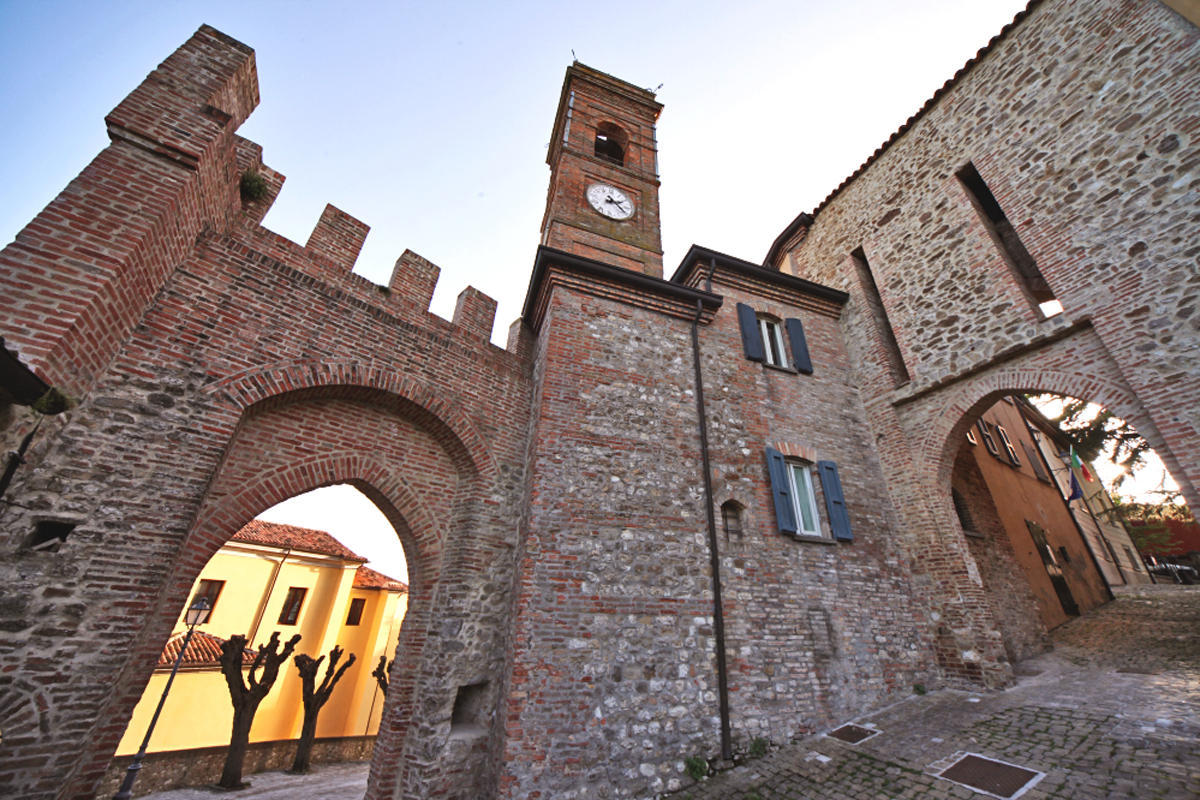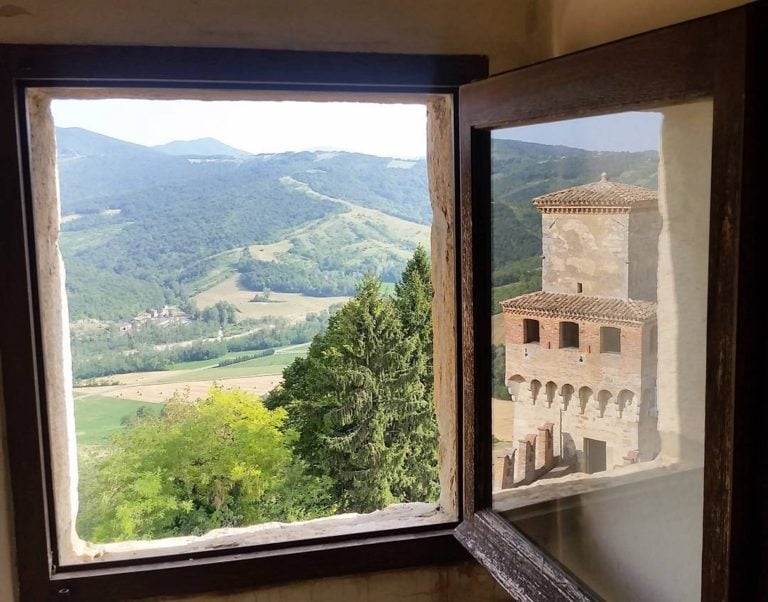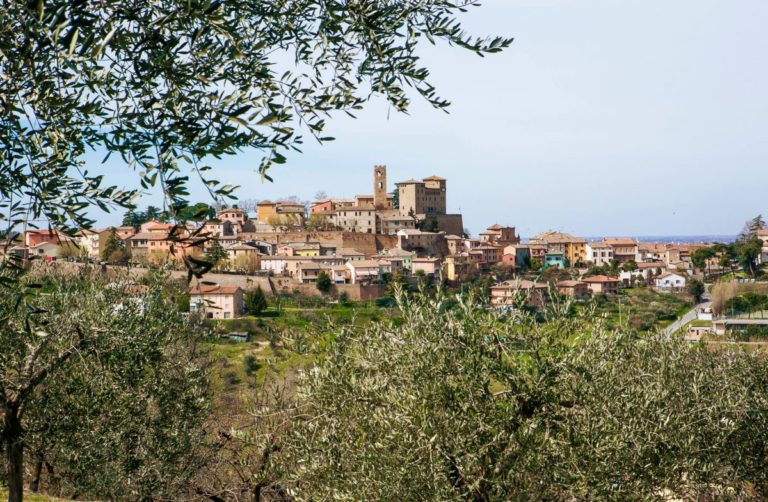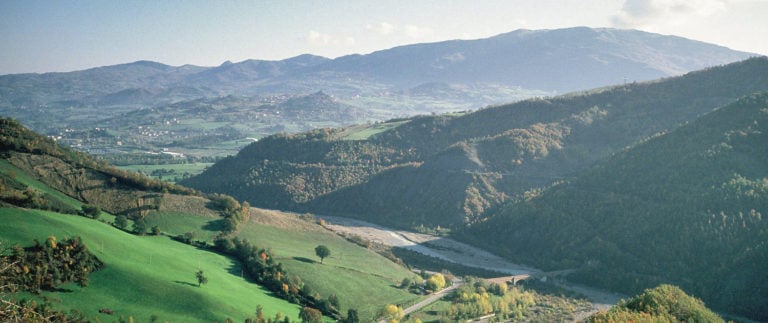In ancient times, Italian noble families defended their kingdoms by erecting strong castles, walls, and fortifications. They had to build these for many reasons: attacks by foreign populations, domestic rivalries between noble families or because they were deployed with opposing factions. In short, Italy was by no means a safe place to live.
The territory of the Romagna inland was no exception. This territory was teeming with fortified settlements, a and most of them was a property of an important Lordship: the Malatesta family. Although it is still difficult to accurately reconstruct the entire Malatesta defense network, certainly the location of their castles was a targeted choice, which allowed them to watch and control their territory.
In the Rimini area, only a few minutes away by car from the Adriatic Sea, you can find some of the most stunning castles of the entire region. In this post you will find ten places you shouldn’t miss.
1. Verucchio Castle
Known as “Sasso Fortress” due to its position on the rocky spur that dominates the valley up to the Adriatic Sea, Verucchio was a Malatesta property from the 12th century, and the traces of this time are still visible in the basements.
Malatesta da Verucchio was born here and was also mentioned by Dante in the Divine Comedy as “Mastin Vecchio”.
He was a warlord and conqueror of lands and cities, and later appreciated governor of Rimini, where, starting from 1295, he developed its power, while maintaining Verucchio as a strategic garrison and bulwark against the opposing lordship of the Montefeltro. Also, for this reason, the fortress was enlarged in 1449 by one of the most important representatives of the Malatesta, Sigismondo Pandolfo.
How to visit the castle: You can visit the fortress on your own, on a guided tour or with a combined ticket including the fortress and the Archaeological Museum of Verucchio. More details here.
2. Montegridolfo Castle
Montegridolfo is a medieval village that over time has experienced a difficult fate of contention, due to its strategic position on the border between the Romagna and Marche region.
The Castle stands on the border that marked the possessions of the houses of the Malatesta of Rimini and Montefeltro, lords of nearby Urbino.
The name seems to derive from the ancient Gridolfi family from Rimini, siding for the Malatesta. During the same period, the two Italian lordships within the Conca valley began to struggle, which cost Montegridolfo three centuries of looting and alternating dominions.
In 1336 the village was even completely destroyed by Nolfo, Count of Urbino. The reconstruction by the patriarch of the Malatesta family, Galeotto, dates back to the following year. There were bloody wars for as long as the Malatesta family ruled Montegridolfo; the much-desired peace came only in the 16th century.
How to visit the castle: Since the castle houses a hotel and restaurant, it can only be visited from the outside.
3. Castle of Albereto in Montescudo
The origins of Montescudo are lost in times. At the time of Emperor Augustus, it served as a military station used to change horses for the couriers who went from Rimini to Rome. In 1233 the Montescudesi swore allegiance to the Lordship of Rimini, coming out from the power of the Lords of Urbino. From 1239 to 1499 the Castle continuously was contended with bloody battles between the Malatesta and the Montefeltro families. The castle was in fact strengthened by Sigismondo Malatesta in these years.
The city walls are built according to the typical “Malatesta military building” with three strong circular towers, the bell tower and the “belvedere” terrace from which one can enjoy the panorama of the entire coast of Rimini. Today, thanks to recent restorations, the castle is one of the architectural gems of the Signoria.
How to visit the castle: The castle houses a restaurant, therefore it can only be visited from the outside.
4. Montebello Castle
The Montebello Castle is one of the most interesting historical buildings in the territory of the Malatesta Lordship. Its legend contributes to its uniqueness too.
The story tells about the young daughter of Ugolinuccio Malatesta, Guendalina, who mysteriously disappeared at the age of eight while playing inside the castle. On the days of the solstice of the years that end with the numbers 0 or 5, visitors can still hear the laughter of the little girl, 12 tolling of bells and the fast beating of a little heart.
How to visit the castle: The castle organises guided tours both during the day and at night. For further information, please visit the relevant website.
Romagna, Rimini, Montebello Castle -Ph. Lamberto Zannotti
5. Montecolombo Castle
There were times of battles between Malatesta and Montefeltro, Guelfi and Ghibellini, Malatesta and the Papal State. These were times when castles were used to jail opponents and enemies, such as Malatestino Dallocchio, who was imprisoned in the Montecolombo Castle in 1209.
Due to the lack of solidity of the river flint, used for the construction of the walls, the castle has gone through numerous restorations over the past 300 years.
How to visit the castle: Private castle, viewable only from the outside.
6. Meleto Castle in Saludecio
The Meleto Castle in Saludecio is a small castle dominating the valleys of Tavollo and Foglia, a wonderful balcony on the Adriatic Sea. Located a few kilometres from the centre of the same name, the fortified village is also fascinating, and includes sections of the ancient walls as well as a large internal courtyard.
How to visit the castle: The castle can only be visited from the outside.
7. Sismondo Castle in Rimini
Built in the 15th century by Sigismondo Malatesta in 1437, the Sismondo Castle houses one of the locations of the Fellini Museum in Rimini.
This castle was conceived as both a palace and fortress. It represented a worthy seat for the court and for the garrison, and the sign of power and supremacy of the Lordship of Rimini. With its large square towers and the mighty sloping walls, the building is still remarkable today. In this castle, Sigismondo Malatesta died on 9 October 1468.
How to visit the castle: The castle can be visited by purchasing a ticket for the Fellini Museum, which also includes admission to the Palazzo del Fulgor.
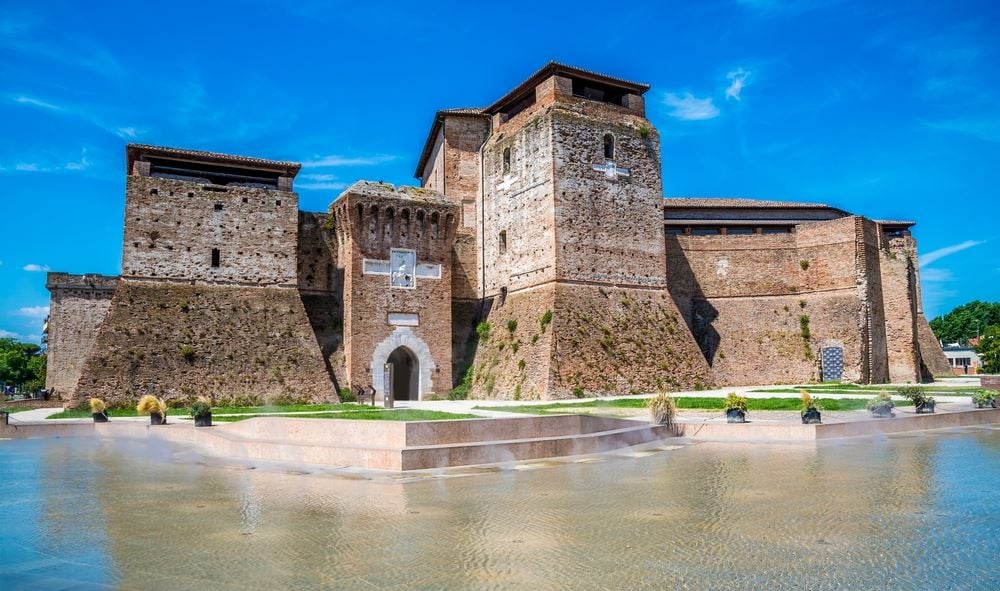
8. Malatestiana Fortress in Montefiore Conca
Although built earlier, in 1337 Malatesta Guastafamiglia transformed the Montefiore Conca Castle into a military machine that was actually a residence too. It hosted the King of Hungary, the Popes Gregory XII and Julius II, the Emperor of Bohemia Sigismund and countless nobles and lords of the time.
The entire structure has been recently restored, giving the visitor the opportunity to enjoy the atmosphere of the time, as well as to observe the historical-architectural stratifications that characterized it. The original roof, which can be admired climbing the highest part of the building, offers a unique view of the Adriatic Sea and the Romagna hills.
How to visit the castle: The admission to the castle includes the opportunity to discover its interior rooms, such as the Emperor’s Hall with frescoes by Jacopo Avanzi, and a rich collection of archaeological finds too. Click here for more information.
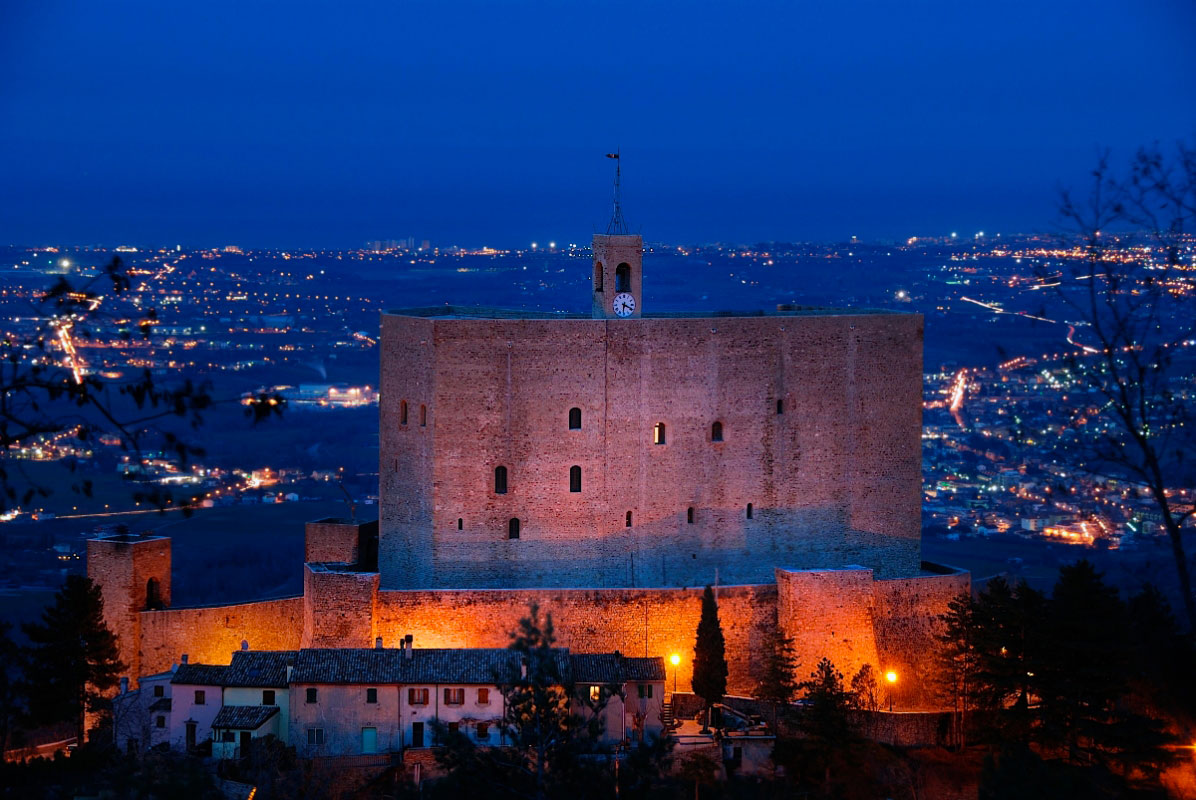
9. Santarcangelo di Romagna Castle
This fortress still belongs to the noble Colonna family. In 1447, during the rule of Sigismondo Pandolfo Malatesta, the fortress took on the aspect that it still has today. The height of the main tower was considerably reduced (built in 1386) and three thick polygonal towers were built at the corners of the main building.
In this way, the defense of the Santarcangelo Castle was one of the first fortresses to experiment with constructive techniques that served to resist the attack of new firearms.
How to visit the castle: The castle is open to the public. Click here for further information.

10. San Leo Fortress
This settlement dates back to the time of the wars between Goths and Byzantines (6th century). It was constantly the subject of contention until it was finally conquered by Federico da Montefeltro in 1441.
The powerful defensive apparatus of San Leo, designed by Francesco di Giorgio Martini, seems to be an extension of the boulder that supports it. With the Papal State, it became a harsh prison where the famous Cagliostro died. Even after the unification of Italy, the fortress continued to serve as a prison until 1906. Today, it hosts a torture museum and an exhibit of weapons, armors and alchemical instruments.
How to visit the castle: In addition to Cagliostro’s cell, the Castle of San Leo houses a collection of weapons, instruments of torture and a reproduction of Vasari’s fresco depicting the capture of San Leo by the Medici family. Click here for further information.
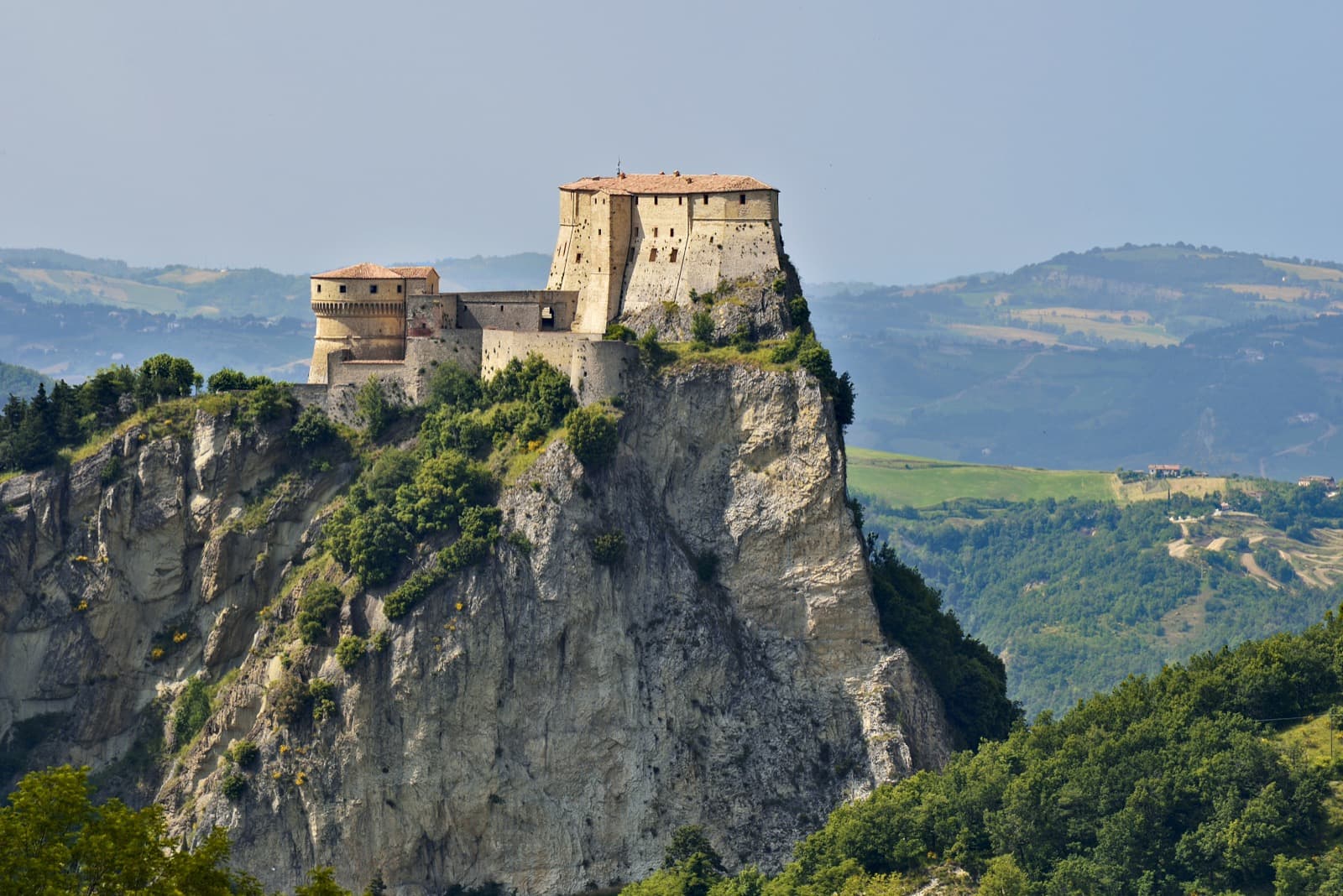
Author

Walter Manni
Explorer and Adventurer: loves sailing the oceans, climbing the highest mountains and surfing on the waves of the web
You may also like
8 Unmissable Castles in the Lands of Guidi and Malatesta
by Walter Manni /// April 13, 2018
Dolce Vita in Valmarecchia: an itinerary among hamlets and hills
by Elisa Mazzini /// June 7, 2016

Interested in our newsletter?
Every first of the month, an email (in Italian) with selected contents and upcoming events.
